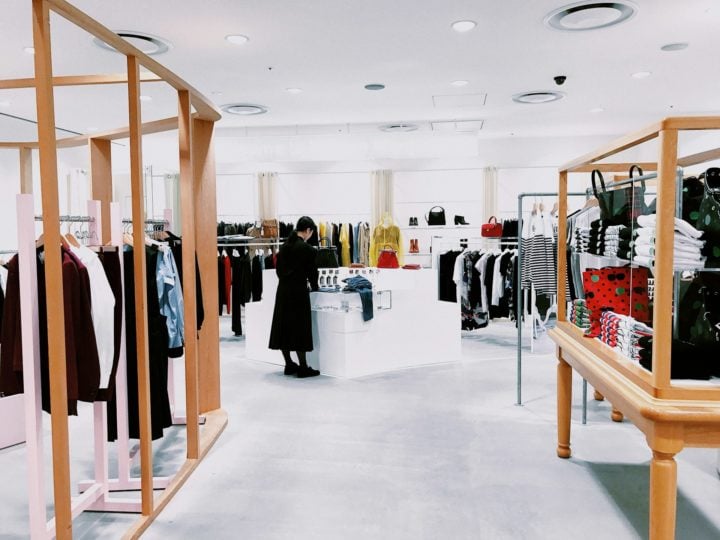CAN YOU USE IOT IN RETAIL BUSINESS? WHAT ARE THE BENEFITS?
The Internet of Things is widely used by many businesses in different fields. It helps them save money, become more efficient, and attract new customers. How can you use IoT in retail business, and what are the advantages?

What are the benefits of using IoT in retail business? This article provides a comprehensive overview. Image credit: Blake Wisz via Unsplash, free license
Internet of Things in the retail business – an idea worth pursuing?
Using the Internet of Things (IoT) in the retail industry can be highly advantageous, offering numerous benefits that enhance customer experience, optimize operations, and drive sales. IoT enables a personalized shopping experience by providing tailored recommendations and promotions based on customers’ preferences and history. Smart devices such as beacons and connected fitting rooms interact with customers’ smartphones, creating an engaging shopping environment.
How can the Internet of Things help retail businesses? (Examples)
- IoT in retail enhances operational efficiency by providing real-time inventory management, supply chain optimization, and energy management. It ensures that popular products are always available, reduces costs, and improves product availability. IoT also enhances security and loss prevention through features like enhanced surveillance and real-time tracking of products.
- In addition to this obvious benefit, IoT enables data analytics and insights, allowing retailers to analyze customer behavior, optimize pricing strategies, and personalize marketing campaigns. It provides valuable insights into customer preferences and purchasing patterns, enabling retailers to make data-driven decisions.
- A good example of IoT in retail is smart shelves. Weight sensors and RFID tags enable automatic monitoring of supply levels and detection of out-of-stock items. This reduces the amount of manual work in these processes.
- Another way to use IoT is personalized marketing. Smart devices collect data about customers’ buying habits and preferences, which allows businesses to send personalized promotions and offers to their clients. Moreover, notifications can be sent when customers are close to the store.
- IoT sensors also help to monitor conditions such as temperature and humidity on the shelves. This ensures that products conform to safety regulations and increases customer satisfaction.
- Sensors and RFID tags allow retailers to track the movement of goods from warehouses to stores in real time. The chain becomes transparent, waste is reduced, and resupply can be ensured on time. Tracking goods sent to customers, similarly, ensures timely delivery and precise tracking information.
- Moreover, IoT technologies offer the possibility to open automated cash registers. They make payment processes simpler, shorten waiting times, and allow businesses to save on personnel. Furthermore, innovative theft prevention and access control systems secure the store and decrease the risk of unexpected losses.
As you can see from these examples, retail businesses may benefit greatly from introducing IoT-based technologies. Nevertheless, initial setup costs may be high, existing systems may need an update, and you must make sure that the network infrastructure supports the increase in the number of devices.

Just imagine a regular retail store fitted with IoT devices aimed at augmenting customer experience… Image credit: Korie Cull via Unsplash, free licenes
How IoT in retail is different from other areas of business?
The implementation of IoT in retail is distinct from its application in other business sectors due to several unique factors. Here’s a detailed look at how the Internet of Things in retail stands out, with detailed explanations:
Customer experience enhancement
1. Personalized shopping experience:
- Retail: IoT devices like smart shelves, beacons, and connected fitting rooms can offer personalized recommendations and promotions to customers based on their shopping history and preferences. For instance, beacons can send discount notifications or product suggestions to customers’ smartphones as they walk by certain products, creating a highly personalized shopping experience. This level of personalization can lead to increased customer satisfaction and loyalty, as shoppers feel the store understands and caters to their needs. IoT in retail can go even further: things like connected fitting rooms can suggest complementary items to try on, enhancing the likelihood of additional purchases. These innovations help retailers differentiate themselves in a competitive market, creating a more engaging and enjoyable shopping environment.
- Other industries: While customer personalization is also important, it often focuses more on user interface customization and service adjustments rather than physical shopping experiences. For example, in the tech industry, personalization might involve customizing software interfaces or suggesting new features based on user behavior. In banking, it could mean tailored financial advice or customized product offerings. These applications, while valuable, do not provide the same level of direct, physical interaction that is possible in retail.